Solar System Definition
What is the solar system?
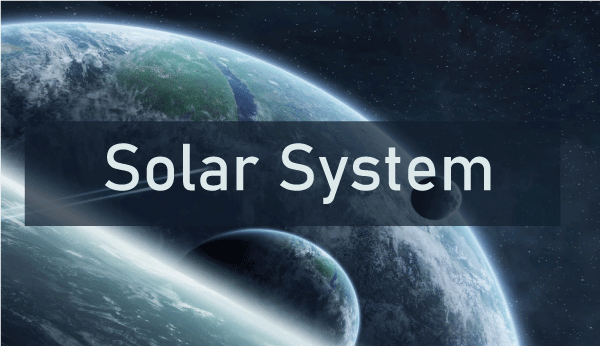
The Solar system is an assembly of the sun with eight planets, meteors, and orbit revolving in a system. Earth is the only planet in the solar system where we living beings can survive, or we can say the Earth is a life-giver.
The solar system exists in a milky way galaxy having other large stars, but it is the one only. It is a continuous system of orbiting different planets around the biggest star called the sun and is located in an outer spiral arm of the Milky Way galaxy.
Objects in the solar system
- Sun - Present in the middle around which all planets revolve
- Planets- There are eight planets, i.e., mercury, Venus, Earth, Mars, Jupiter, Saturn, Uranus, and Neptune.
- Asteroids, meteoroids, Kuiper belt objects, and comets
Solar system composition
| Sun |
99.85% |
| Planets |
0.135% |
| Comets |
0.01% |
| Satellites |
0.00005% |
| Meteoroids |
0.0000001% |
| Minor planets |
0.0000002% |
| Interplanetary medium |
0.0000001% |
Origin of the solar system
The origin of the solar system is a competitive and debatable topic based on various theories that try to define the phenomena of the solar system, and these are:
- The accretion theory
- The protoplanet theory
- The modern laplacian theory
- The capture theory
- The modern nebular theory
The solar system is a part of the universe resulting from a big ban expansion about 13.7 billion years ago. It was explained under the Big bang theory, according to which the universe started from an unimaginably tiny "dot" that expands like a balloon after a blast termed "big bang". In this blast, a single dot suddenly expands in energy, matter, and space.
When this hot and dense explosion cools down, its particle collides and stick together, and hydrogen and helium are produced along with a small amount of lithium in the universe.
Approx. after 8.7 billion years of the big bang explosion, the solar system came into existence (around 5 billion years ago). This system begins in a cloud of gas and dust called a nebula (most beautiful objects). A small patch within a nebula begins to collapse itself, and stars start behaving violently. They release energy and matter that compress the gas and dust in the nearby neighborhood within the nebula. The planet formed in the disk where dust and gas settled that rotates around the star called a protoplanetary disk.
This is how planets are formed and exist in the disk. These planets are divided into three categories, i.e., Terrestrial, Jovian, and ice giants.
- Terrestrial planets- These are also called rocky planets or solid planets, composed of silicate rocks and metals such as mercury, Venus, and mars.
- Jovian planets- These are the double size of terrestrial planets and are called gas giants, hydrogen, and helium, such as Jupiter and Saturn. The jovian planet consists of low boiling point materials.
- Ice giants- This planet has heavier materials than hydrogen and helium, such as methane (CH4), water ice, and ammonia (NH3)ice, and has rocky cores. Examples of ice giants are Uranus and Neptune.
Description of solar system planets
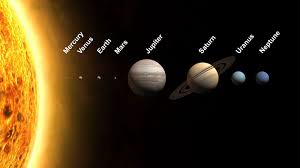
a. Sun: Considered the biggest star at the solar system's center. It is the natural source of heat and light on Earth. A 4.5 billion-year-old star holds 99.8% of the solar system's mass and is 150 million kilometers from Earth. The sun is monitored 24/7 with a fleet of spacecraft by NASA and other international space agencies.
b. Sun is a medium star among stars in our universe because some are 700 times bigger, and some are just a tenth of its size. As eight planets revolve around the sun, the sun also revolves around the milky way galaxy. Here are some facts about the sun:
| Radius |
695, 700km |
| Star type |
Yellow draw |
| Equator circumference |
4,379,000 km |
| Number of planets |
8 |
| Time is taken to rotate on an axis |
27 earth days |
| Temperature |
5973o C to 15,000,000oC |
| Average orbital speed around the milky way |
720,000 km/h (200km/s) |
| Made of |
Gases like hydrogen (91%) and helium |
c. Mercury: The first and smallest size planet in the solar system, is placed just close to the sun, due to which it is the hottest planet in the solar system. It is a water- and the atmosphere-less planet, so life is impossible on this. It is a rocky planet categorized under terrestrial planets with a solid cratered surface. Its size is slightly bigger than the Earth's moon, and its surface is like a moon. It completes one revolution around the sun in only 88 hours. It's atmosphere is thin and made up of sodium, helium, oxygen, potassium, and hydrogen.
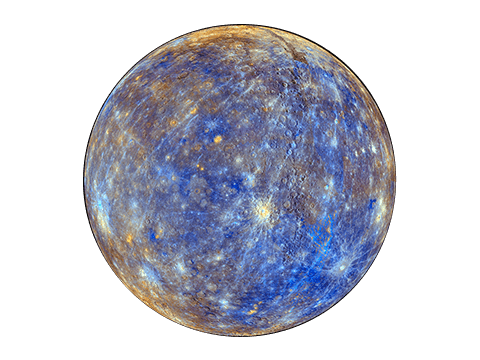
Some facts about mercury:
| Size |
Smallest among all the planets, slightly larger than Earth's moon |
| Inside track |
It orbits closest to the sun |
| Speed |
As it is nearest to the sun, it has to travel the shortest distance around the sun. It travels fast through space, nearly 29 miles (47 km) per second. |
| Moonless |
It has no moons |
| Ring less |
It is a ringless planet |
| Lifeless |
It is hard to survive on mercury as it is near the sun, so it has to bear solar radiation and extreme pressures. |
| Robotic visitors |
Till now, NASA has done two missions on mercury named Mariner 10(the first to fly by mercury) and MESSENGER (the first to orbit), and ESA's BepiColombo is in line. |
| Surface and environment |
As a rocky planet, it has a solid, cratered surface like an earth moon. Its atmosphere contains gases like sodium, helium, hydrogen, oxygen, and potassium. |
d. Venus: Some of the facts about Venus are:
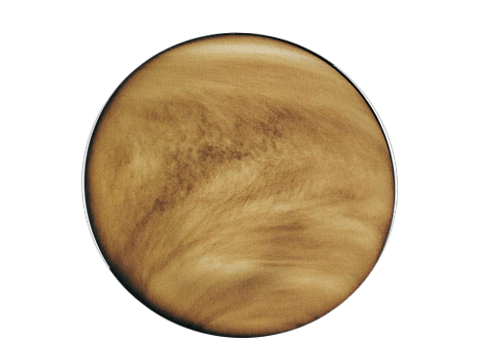
| Distance from Sun |
67,209, 503 Km |
| Length of the year |
225 earth days |
| One way light time to the sun |
6.013228 mins |
| Toxic twin |
Venus is considered a toxic twin of Earth due to its dense toxic atmosphere and extreme surface heat. |
| Have short years and long days |
Venus covers a revolution around the sun faster than Earth (takes approximately 225 earth days), but as it rotates very slowly on its axis, Venus day lasts 243 earth days. |
| Surface |
Venus has diverse terrain due to its solid surface covered with rigid plateaus, rifts, domestic volcanoes, mountains, and volcanic plains. |
| Stinky clouds |
Stinky thick, toxic clouds of sulphuric acid covered the Venus that smelled like rotten eggs. These clouds start at 45 to 70 km (28 to 43 miles). |
| Greenhouse effect |
Due to toxic gases, Venus has a thick atmosphere that traps heat. It increases its greenhouse effect and makes it the hottest planet with the highest surface temperature of 700oF (390oC), which can melt lead. |
| Backward sunrise |
As Venus rotates backward on its axis, the sun rises in the west and sets in the east. |
| Life on Venus |
Scientists have found out some microbes (phosphine) are high in the cloud where the temperature is cooler and pressure is similar to the Earth's surface. |
e. Earth: The live-giving planet in this system is placed at number third known as Earth. It is the only planet with water covering about two-thirds of the globe. The Earth's atmosphere consists of gases like oxygen, nitrogen, carbon dioxide, etc. (percentage amount may vary). It is famous as a blue planet due to the presence of water and Venus's twin. The word Earth is a Germanic word that means "the ground". Earth rotates on its axis from a day and night system and revolves around the sun. Earth's southern and northern hemispheres toward the sun change throughout the year.
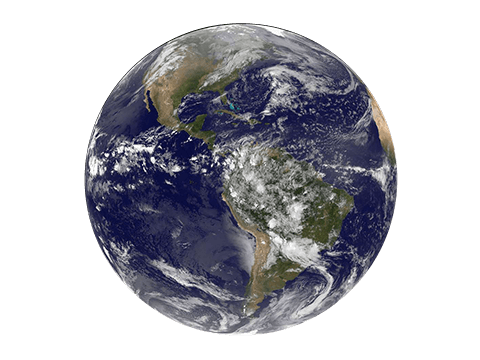
| Earth's distance from the sun |
91,973,096 km |
| One way light time to the sun |
8.228827 mins |
| Length of year |
365 days |
| Life on Earth |
Earth has a perfectly balanced atmosphere to breathe and live in, containing 78% nitrogen, 21% oxygen, and 1% other ingredients. |
| Ring less |
Earth is without rings |
| Home |
Earth is a perfect home for everyone, including animals, humans, and other species. |
| Protective shield |
Earth's atmosphere act as a protective shield that prevents us from incoming meteoroids that break before striking the surface |
| Satellite |
Earth has a natural satellite called the moon, and many men made satellites. |
f. Mars: Fourth planet from the sun in the this system. It is a dynamic, cold, dusty, and desert world with a thin atmosphere. Mars has extinct volcanoes, polar ice caps, different seasons, and evidence that it was even more active in the past.
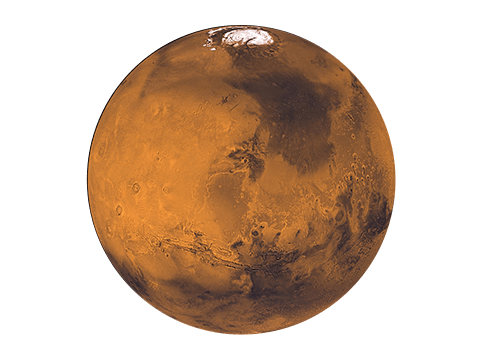
| Distance from sun |
150, 744, 554 km |
| One way light time to the sun |
13.487121 mins |
| Length of the year |
687 earth days |
| Planet type |
Terrestrial |
| Longer days |
One day on mars completed over 24 hours, and it's a complete orbit around the sun in 687 earth days. |
| Atmosphere |
Mars consists of gases like argon (Ar), nitrogen (N2), carbon dioxide (CO2), and a small amount of oxygen & water vapor that makes its atmosphere thin. |
| Rusty planet |
Due to iron, minerals in the martian soil oxidize, and rust makes the atmosphere and soil look red. That's why it is called Red Planet. |
| Tough place for life |
In the current scenario, life on mars is hardly possible, but scientist carries out missions to determine mar's past and future potential for life. |
| Missions |
Till now, many missions have been conducted on mars, and the first mission was Marnier 4 flyby in 1965 |
g. Jupiter is the fifth planet in the solar system, with an orbit of about 484 million miles. It is a massive planet and the biggest object in the night sky. Jupiter has its internal heat source, due to which it emits more energy in comparison to the heat received by the sun. According to NASA, Jupiter was formed from the excess gasses from the formation of the sun and was 80 times more massive during its development. It is the first planet created in the solar system that can hold more than 1300 earth.
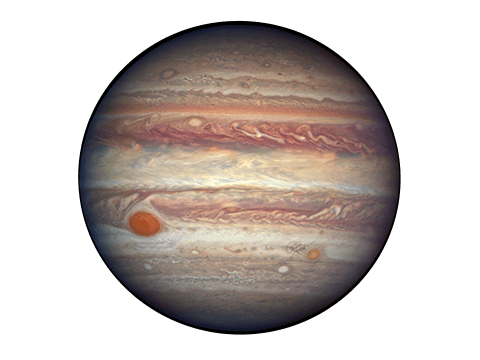
| Distance from sun |
460,257,120 km |
| One way light time to the sun |
41.179169 mins |
| Length of year |
4,333 earth days |
| Planet type |
Gas giant |
| Long year/ short day |
It takes around 12 earth years to complete one orbit of the sun, and it rotates about every 10 hours once (considered Jovian day and year) |
| Atmosphere |
Gases like helium and hydrogen make the planet's atmosphere, which makes it live less. |
| Superstorm |
This planet has a great red spot, a gigantic storm that raged over a century. This gigantic storm is twice the size of the Earth. |
| Moons |
It is the only planet having more than 75 moons. |
h. Saturn: The second largest and sixth planet. It has an extensive and unusual ring system composed of ice and rock. The atmosphere is made of hydrogen and helium and has the hottest air. Jupiter was named after the roman god of agriculture and wealth and was the father of Jupiter also.
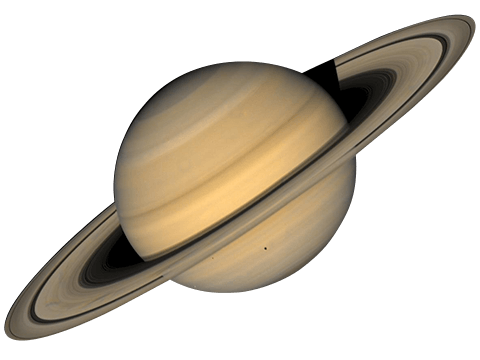
| Distance from sun |
912,980,071 km |
| One way light time to the sun |
81.684256 min |
| Length of year |
10 759 earth days |
| Planet type |
Gas giant |
| Long years and short days |
It takes approximately 10.7 hours to rotate on its axis first and 29 earth years to orbit the sun. |
| Own solar system |
According to discoveries, Saturn has 63 known moons, and 20 moons are lined up for their discovery, so it has a total of 83 moons. |
| Rings |
Saturn is the owner of the spectacular ring system consisting of seven rings. These rings have several gaps that divide them. |
i. Uranus: Astronomer William Herschel discovered Uranus in 1781 with the aid of a telescope. This planet has the third largest diameter among our solar system planets, which 63 earth can be fitted, and the owner of the coldest atmosphere. This planet was named after a Greek god, not after a roman god.
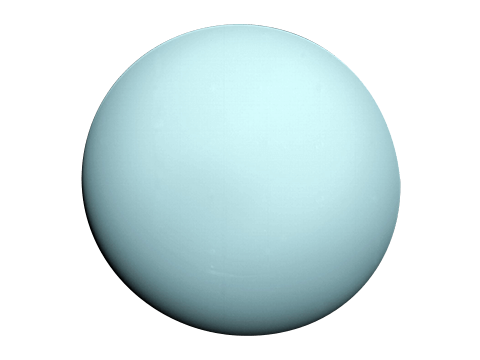
| Distance from sun |
1,857,819,201 km |
| Length of the year |
30,687 earth days |
| One way light time to the sun |
163.520784 mins |
| Planet type |
Ice giant |
| Ice giant |
The mass of Uranus is a hot, dense fluid of "icy" materials (water, methane, and ammonia) above a small rocky core. |
| Gassy |
The Uranus atmosphere comprises atomic helium, molecular hydrogen, and a small amount of methane. |
| Size |
Comparing to Earth is four times wider than the Earth |
| Long years and short days |
A Uranian day is about 17 hours, and it takes 84 earth years to complete an orbit of the sun called a uranian year. |
| Moons |
It has a total of 27 known moons that are named based on the character form the work of William Shakespeare and alexander pope. |
| Lifeless |
As it is an ice giant, it doesn't support life. |
| Fact |
It rotates from east to west but also on its side. |
| Rings |
13 rings have been discovered yet of Uranus in which outer rings are brightly colored, and inner rings are narrow and dark |
j. Neptune: This is the last but not least planet of our system, similar to Uranus. It is 30 times as far from the sun as the Earth making it a dark, cold, and windy planet. Scientists Urbain Le Verrier, John Galle, and John Couch Adams discovered Neptune in 1864.
| Distance from sun |
2,780,425,738 km |
| One way light to the sun |
248.764478 mins |
| Length of the year |
60,190 earth days |
| Planet type |
Ice giant |
| Atmosphere |
Its atmosphere comprises atomic helium, methane, and molecular hydrogen. |
| Ice giant |
Its surface is covered with icy material, including water, methane, and ammonia. |
| Long years and short days |
A Neptune day completes in 16 hours and takes 165 earth years to orbit the sun to make one Neptunian year. |
| Moons |
Consist of 14 known moons named after nymphs and sea gods in Greek mythology. |
| Lifeless |
It also doesn't support life |
| Rings |
It has five visible rings, and four more blurred ring arcs, considered clumps of debris and dust. The gravity of a nearby moon forms these blurred rings. |
Members of the solar system other than planets
Satellites: We can define a satellite as an object that revolves or orbit around a bigger object in space. For example, Earth orbits around the sun, yet the Earth is considered a planet but a satellite of the sun, and the moon is the satellite of Earth. With the advancement in technology, we have two types of satellites:
- Natural satellite: In our solar system, there are dozens of satellites present considered natural satellites (already present in the universe). For example, all eight planets orbit around the sun, and almost every planet has its satellite (Earth has a moon, and Saturn has around 53 natural satellites).
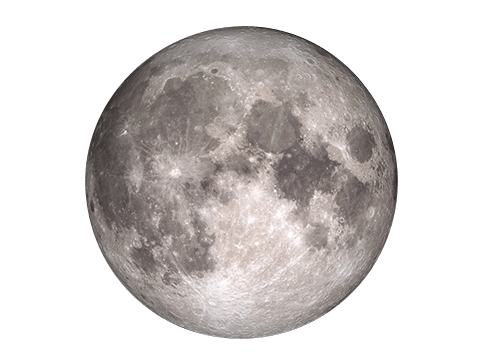
- Artificial satellites were in reality in the mid 20 century, but our scientists made it possible. Satellites designed and made by humans are called "artificial satellites or man-made satellites". These satellites are commanded to orbit around the planet for various purposes. These artificial machines are launched into space and moved around different bodies in space. These artificial satellites are commanded to take pictures of the planets, the sun, the whole solar system, black holes, faraway galaxies, or dark matter, which will help meteorologists study them and get a clear picture or understanding of the solar system or universe. Some satellites help scientists in predicting weather and track hurricanes. Satellites are far better than telescopes as they fly above the atmosphere's clouds, molecules, and dust.
Not only empty satellites humans (scientists) can also go along with them for search and other purposes. Now communication has gone far beyond our imagination due to the help of satellites because satellite consists of an antenna and a power source that sends and receive information, often to and from the Earth. Satellites are designed in many sizes and shapes and get energy from solar panels attached to them (that convert solar energy to electric energy).
First satellite: Sputnik, was launched by the Soviet Union in 1957.
Satellites are used for these purposes:
- planet observation and imagery
- communication
- navigation
- makes television and telephone usable
- business and finance
- climate and environment monitoring
- land stewardship
- provide safety
- space science
- help in development
- Comets: Other than planets and satellites, there are some other small bodies orbiting the sun with a substantial fraction. These bodies are frozen leftovers or cosmic snowballs that existed during or after the solar system's formation called comets. Comets are large, icy objects of dust and ice that orbit the sun. These are the icy bodies of frozen gases, dust, and rocks orbiting in highly elliptical orbits from 4.6 billion years ago, and they take hundreds and thousands of years to complete orbit. Comets orbit closer to the sun in the Kuiper belt. They also get heat up and spew gases and dust into a glowing head and move forward according to gravitational force. They transformed into glowing heads that could be larger than a planet. An approximate number of comets are 3858 in the system, which can also be dangerous for Earth.
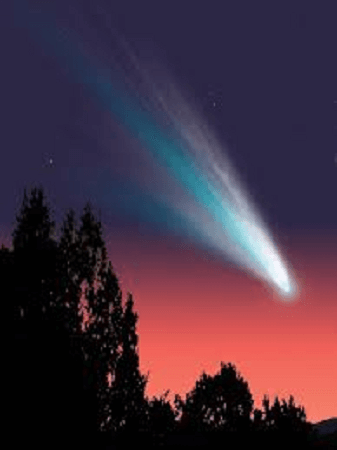
- Asteroids are different from comets, called minor planets or planets or planets made of rock and metal orbiting the sun. Asteroids are present between the orbits of Mars and Jupiter, called the asteroid belt. Asteroids were leftovers of planets when the solar system was formed. No two asteroids are the same (same in size and weight), some are hundreds of miles in diameter, and some are as small as pebbles.
Asteroids are formed in different locations at different distances from the sun and are made with rocks with clays, metals, nickel, and iron. The latest count of asteroids is 1,266,860.
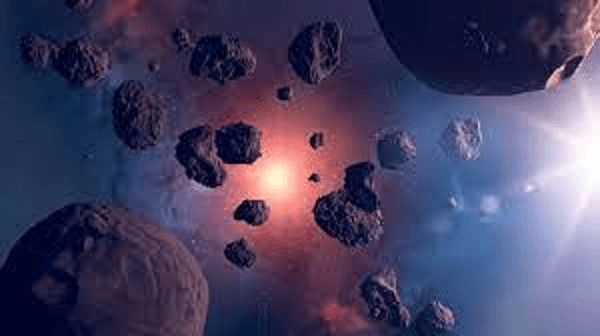
|









 For Videos Join Our Youtube Channel: Join Now
For Videos Join Our Youtube Channel: Join Now












